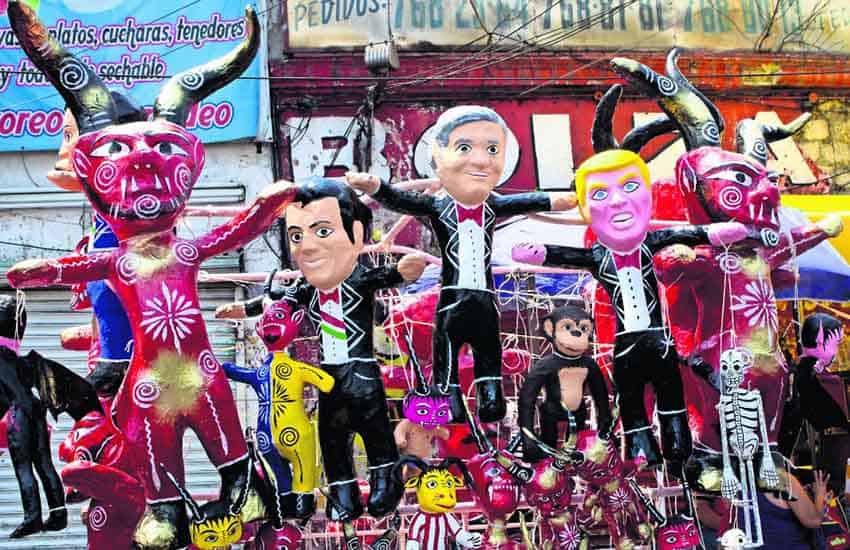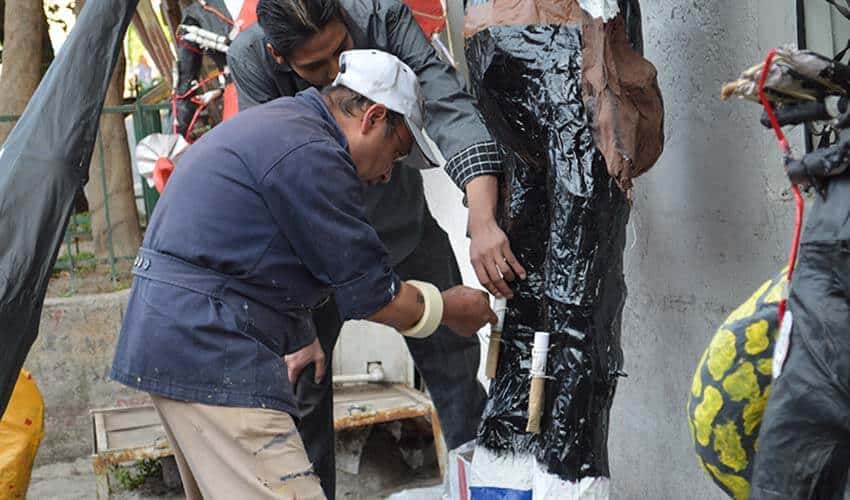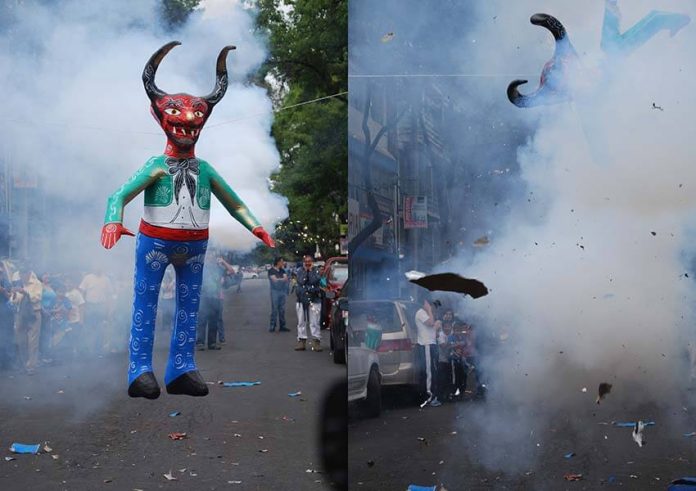Some years ago, there was a fad of making and smashing piñatas in the shape of Donald Trump. More recently, something similar happened with those made like coronaviruses.
This was primarily a phenomenon in the United States. Piñatas haven’t really had a history of being used for political and social statements in Mexico.
But one of the piñata’s papier-mache cousins, the Judas, was used for that purpose — and it almost led to its demise.
Today is Holy Saturday, the day between the commemoration of the death of Christ and the celebration of his resurrection. It is also the day, according to tradition, when the apostle Judas Iscariot, who betrayed Jesus to Roman authorities for money, committed suicide.
For the unspeakable sin of betraying the son of God, Judas has long been an icon of evil second only to the Devil himself in the eyes of Catholics.

In southern Europe, a tradition arose of making effigies to represent Judas, then burning them on Holy Saturday as a way to repudiate evil and purify the community for the upcoming celebrations. The Spanish took this tradition with them to the New World.
Of course, Mexico made changes. One of these was to forego the crude human figure made of whatever was on hand to something that required more artistic talent — often in a hard papier-mache craft style called cartonería.
Eventually, a figure of the Devil became the most popular, with the idea that it represented Judas after the betrayal, rather than trying to depict what he might have looked like in life. The second adaption made in Mexico was to “burn” the figure not by setting it alight but by setting off a bunch of fireworks attached or embedded into the figure, essentially blowing it to pieces and destroying a finely crafted artwork that took hours to make.
Until the mid-20th century, Holy Saturday was the biggest day on the calendar for cartoneros, those who use papier-mache to create festival paraphernalia and more. Artisans like Pedro Linares of Mexico City would make hundreds of them, knowing that when they all sold, he could buy his children necessities affordable only once a year.
But a third tradition with the Judases nearly wiped out the entire Holy Saturday ritual in the 1950s: that of making Judases in the form of living public figures who for one reason or another had prompted the ire of the community — in particular, authorities.
During Mexico’s decades-long one-party rule by the Institutional Revolutionary Party (PRI), such mockery of political leaders became intolerable. Artisans’ workshops were checked in the run-up to Holy Week to see if any Judases representing the president or others were being made.

Then, in 1957, a warehouse storing fireworks (some say it had military munitions) caught fire and exploded, causing deaths and devastation around the La Merced Market in Mexico City. Authorities took the opportunity to outright ban fireworks almost entirely in the capital.
Without the fireworks, a Judas is not a Judas, and so the business of making them all but died.
One notable exception was Pedro Linares’ family, who managed to get exemptions from the ban and set Judases off in front of their home in the capital’s Merced Balbuena neighborhood, a tradition the family continues each year on Holy Saturday.
But for most others, the tradition was prohibited, and as goes Mexico City, generally goes Mexico. Soon, other cities followed suit, instituting bans “for safety reasons.”
Many cartoneros believe the real reason was political, and I tend to agree with them. For example, there have never been such restrictions on toritos — cartonería bulls laden with fireworks that are run through crowds as part of annual celebrations. The toritos are at least as dangerous as Judases, probably more so, but they have never been politically charged and they were never prohibited, although in recent years the enactments have often been moved to more remote locations outside the downtown.
Judases have made something of a comeback since the PRI’s hold on Mexico was more or less broken in 2000. But the setting off of Judases, even today, generally requires special permits, and there are often restrictions, such as keeping crowds at a distance.
It seems ridiculous given how people dance in showers of sparks and rockets when toritos are running around, but the government is apparently not yet ready to drop the “public safety” pretense just yet. In most communities where Judases are “burned,” the brightly painted figures are hoisted into a tree or suspended in a way that allows them to dangle, much like a piñata. Some words might be spoken, but usually, the fireworks are simply set off unceremoniously. Often there is more than one Judas.
Some communities have interesting variations on the burning: in the state of Guanajuato, some set the effigy on fire, with or without accelerant, as a way to get around the ban on fireworks. In Jerez, Zacatecas, charros (cowboys) compete to lasso one of the effigies as they are set off so that they can drag it through the streets. In some places, it’s a treat for children to go home with an arm or leg or head from the remnants of an exploded Judas — not unlike baseball fans taking home a trophy ball that flew into the stands.
Judas burnings are still found mostly in central Mexico, but their comeback is a welcome sign of the population’s freedom of expression.
Leigh Thelmadatter arrived in Mexico 18 years ago and fell in love with the land and the culture in particular its handcrafts and art. She is the author of Mexican Cartonería: Paper, Paste and Fiesta (Schiffer 2019). Her culture column appears regularly on Mexico News Daily.
